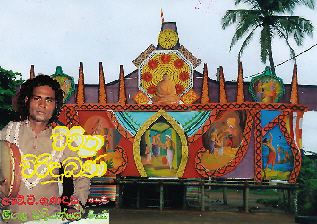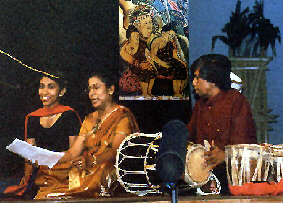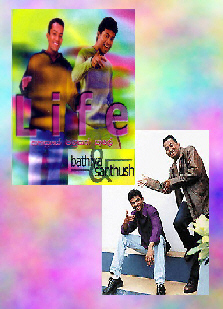Abstract for the following WOM-article:
2002: “Jataka Narrations as Multimedial Reconstructive Embodiments of the Psychic System Buddha Shakyamuni”. In: The World of Music, issue 44(2): Body and Ritual in Buddhist Musical Culture. Paul Greene, Guest Editor, S. 115-134
Martina Claus-Bachmann
The 547 Jataka narrations are collected in the 10th book of the Khuddaka Nikaya, which is itself the 5th part of the Sutta Pitaka, one of the 3 baskets of the Tipitaka, also called 'baskets of scriptures', buddhist canonical texts, which were at last codified under the lecturer Buddhagosha in the 5th century after Christ. The stories provide an account of episodes concerning the various reincarnations of Buddha Shakyamuni in former existences before becoming the Buddha at last. They illustrate the step-by-step development to perfection by the psychic system, called Buddha Shakyamuni in the last existence. The view of this article tries to unify constructivistic-systemic philosophy and buddhist imaginations of embodiment. Music is seen as a part of the constructive potential, which is creating and keeping up individual psychic systems or collective cultural ones. The embodiment of one psychic system in a sequence of reincarnations is constructed in the Jataka-tales in two specific ways: a) in the main actors of the stories, who are different persons, but at last one and the same and b) in the personification of one special quality, like generosity, selflessness or honesty etc., which the main actors embody in the specific story, illustrated in the plot. As the continuity of a cultural system is always an act of memory and depends on the memory-related activities of the participants, the article shows, in which way multimedia-performances of Jataka-tales are preserving a part of the network of the theravada-buddhist culture in Sri Lanka today. Music is seen as one important part of this multimedial network and one sensory component in the physical process of transfering the embodied content of the ancient story to a modern audience. Exemplifying the rich tradition and showing the continuity despite of the change the musical shape of three very different ways of Jataka-performances is analysed and described:
a) The archaic version of a story-teller, who is accompanying himself with his Rabana, declaiming the Serivavanije-Jataka as a part of the multimedial performance of this tale at a Vesak-Pandal (big wooden frame-construction with a painted picture gallery of the story and ornamented with a chain of small rhythmically glimmering bulbs);

b) The verses of the Vessantara-Jataka, which are sung or performed as a scenic play at funerals or other sad occasions (here a stage performance with the artist family Shilpadhipathi)
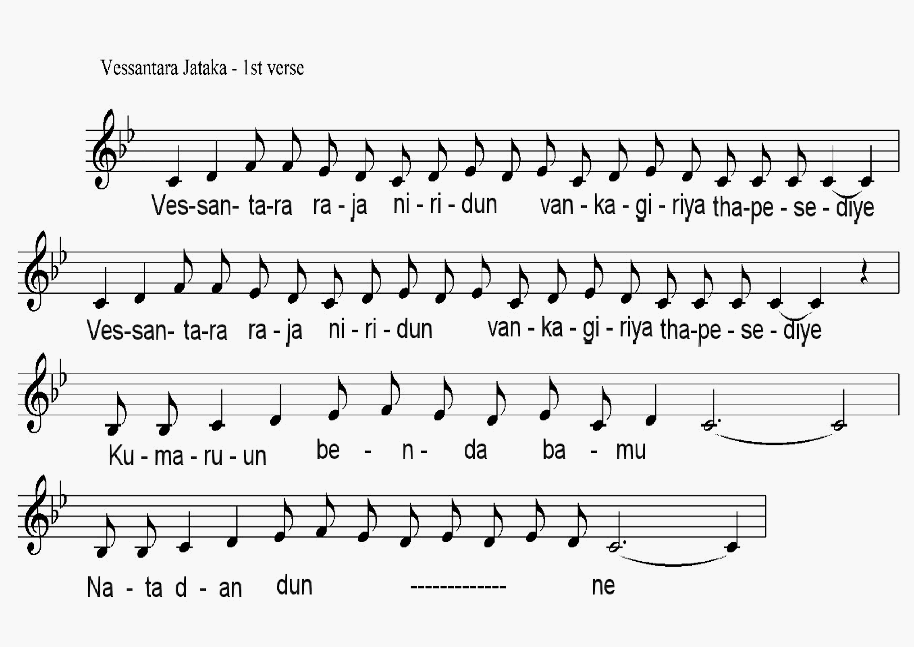
and
c) The recent Pop/Rap-version of the Sirisanghabo-Jataka, very popular with the young generation, reinterpreted by the male duo Bathiya&Santhush and recorded in a studio.
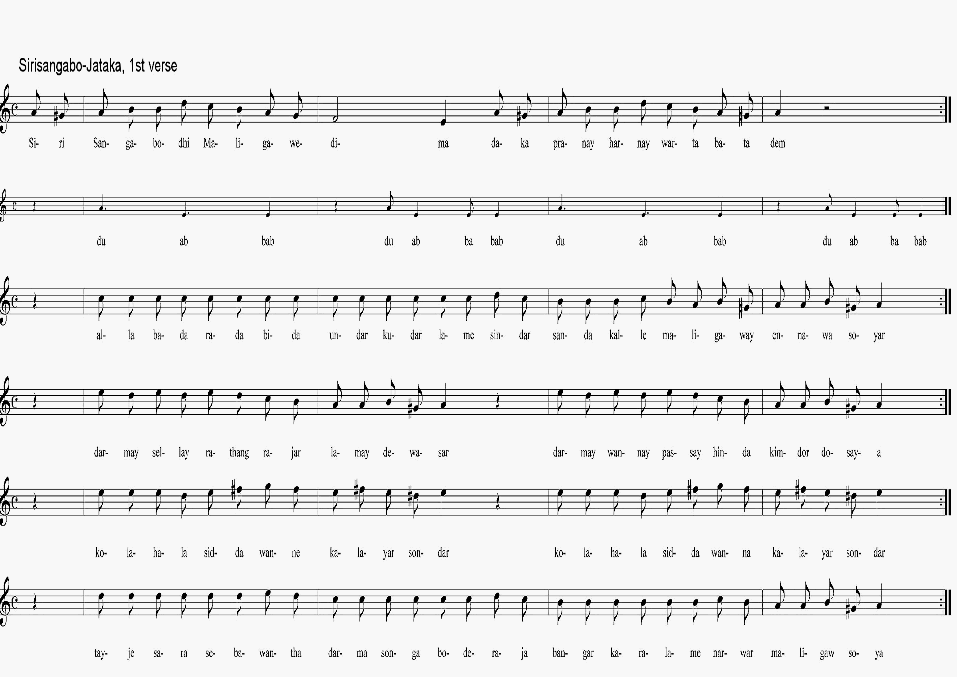
(If the web-appearance of the transcriptions is not clear, please download the image and stretch it.)
